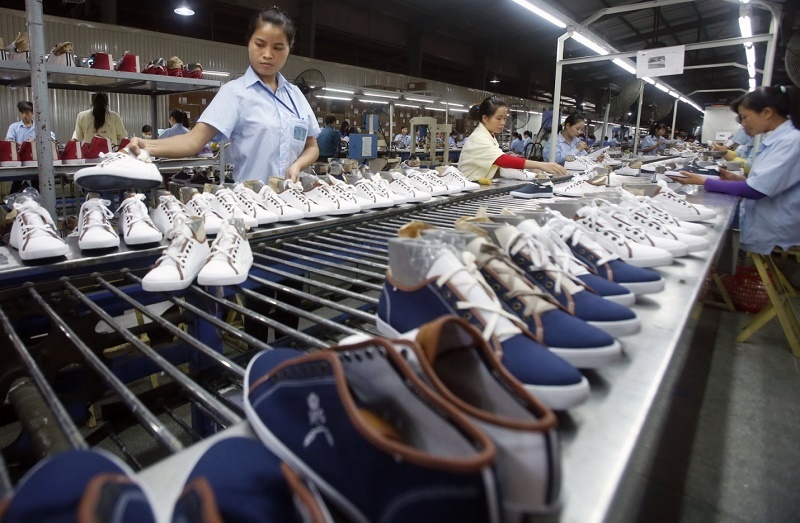Footwear export industry: domestic enterprises' regression
According to statistics of the General Department of Vietnam Customs, total export value of footwear of Vietnamese enterprises has increased continuously in recent years. However, the share of export of the whole sector of FDI enterprises is much higher than that of domestic ones and the export value of domestic enterprises tends to decrease.
The United States is the leading market for Vietnamese footwear imports. Exporting this product to the US always accounts for about 30% of total export turnover of footwear of the country. In terms of the proportion of footwear exports to the United States in the total export turnover of the country to this market from 2011 to 2016 also always accounted for 11% to 12%.
In 2016, the United States is the largest importer of footwear from Vietnam with a turnover of $4.483 billion USD, a 10% increase from 2015. The second largest market is China with a turnover of $904.9 million USD with 20% of growth.
The General Department of Vietnam Customs also said that in terms of cyclicality, footwear exports generally started to grow in the second quarter and reached the highest level in the third quarter. In 2016, footwear exports averaged 1.083 billion USD/month.
Domestic firms' regression
According to the Vietnam Leather and Footwear Association (LEFASO), 2017's production and export forecasts will have a higher growth rate than 2016, which is expected to reach 5%, export turnover will reach nearly 20 billion USD (increase by over 10%).
According to the Ministry of Industry and Trade, in the first two months of 2017, the output of leather shoes and sandals was estimated at 32.9 million pairs, up 0.1% over the same period. Export turnover of footwear is estimated at $2 billion USD, up 10.7% over the same period. Vietnam is among the top four countries in terms of volume (after China, India and Brazil) but is the third largest exporter in the world in terms of value (after China and Italy) .
Vietnam's footwear products have been exported to more than 50 countries. In the United States, the EU and Japan, Vietnamese footwear continues to increase market share and rank second after China. According to LEFASO, the FDI sector contributes 80.8% of the total export value of the industry, mainly to Taiwanese and Korean businesses with billions of dollars in export turnover each year.
The contribution of FDI enterprises has increased rapidly over the years. If in 2013, this sector accounted for 75% of total, in 2015, this figure increased to 78% and 80.8% in 2016. The export of FDI enterprises is continuously increasing as the enterprises continue to expand the capacity of existing footwear workshops and build new factories in Vietnam in order to meet the opportunities for tax reduction from Free Trade Agreements.
Contrary to the growth of FDI enterprises, the export of domestic enterprises is on the downward trend, with 25% in 2013, down to 21.4% in 2015 and 19.2% in 2016. For reasons, experts said that due to difficulties in capital and market accessibility, domestic enterprises are slow in expanding production and have weak competitiveness.
Domestic enterprises need to rise
Experts predict that the year of 2017 will have better prospects for Vietnam's footwear exports. Because the Free Trade Agreement between Vietnam and the Eurasian Economic Union with new tax regulations will give more opportunities for the market for Vietnamese footwear. The agreement, which is expected to come into effect in early 2018, is also expected to help attract foreign investment and orders for the footwear industry.
However, the market opportunities are just a necessary condition, the footwear industry in Vietnam want to grow stronger, of course there should be policies to support domestic enterprises to access more capital and access to markets and the need of the efforts of the domestic enterprises themselves to improve the production capacity, increase the quality of products, and promote trade to expand the market.
These are especially important for the sustainable development of the domestic manufacturing sector in general and the footwear industry in particular. With the proportion of FDI enterprises occupying more than 80% of the total sector's exports and tending to increase, domestic enterprises have to make great efforts to rise. Without changing this proportion, despite the fact that the overall growth in footwear exports is further growing, the real economic value that domestic firms contribute to GDP and increases the competitiveness of national economy is not much.










